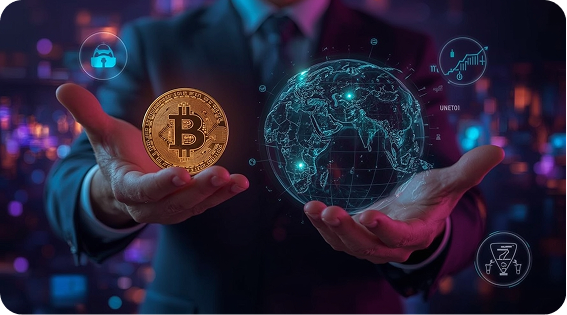As the cryptocurrency space continues to evolve, new altcoins are emerging with unique features and promising potential. These digital assets are gaining traction for their ability to address challenges and offer innovative solutions within the broader crypto ecosystem. Let’s explore some of these emerging altcoins and why they could be pivotal in 2025.
One altcoin that has been attracting attention is Solana (SOL). Solana has established itself as a leading blockchain platform known for its fast transaction speeds and low fees. The growing decentralized application (dApp) ecosystem on Solana is another reason for its increasing popularity. With these key advantages, Solana is well-positioned to compete with other major blockchain platforms and further expand its presence in the crypto space.
Another rising star is Polkadot (DOT), which solves one of the most significant issues in the crypto world: blockchain interoperability. Polkadot enables different blockchains to communicate seamlessly, a crucial feature as the industry expands. Polkadot is attracting developers who want to build interoperable blockchain projects by focusing on secure and scalable solutions. Its growing developer community only adds to its potential for success in 2025.
Next, we have Avalanche (AVAX), a high-performance blockchain quickly becoming a competitor to Ethereum. Avalanche offers fast, low-cost transactions, making it attractive for decentralized finance (DeFi) applications. Its adoption in the DeFi space continues to grow, positioning Avalanche as an altcoin with significant potential in the coming years.
Chainlink (LINK) also plays a vital role in the crypto ecosystem. Chainlink is a decentralized oracle network that connects smart contracts with real-world data, enabling the functionality of many DeFi platforms. Its key role in the DeFi space and strong partnerships make it an altcoin to watch in 2025.
Polygon (MATIC) is another project that continues to make waves, particularly for its ability to scale Ethereum. By offering low-cost transactions, Polygon is crucial for Ethereum-based dApps and is helping to alleviate some of Ethereum’s scalability issues. As more projects are built on the Ethereum blockchain, Polygon’s role in providing efficient, cost-effective solutions becomes even more critical.
Algorand (ALGO) stands out for its fast, low-cost transactions and commitment to environmental sustainability with a carbon-neutral network. Due to its scalability and energy-efficient consensus mechanism, Algorand is positioning itself as a top altcoin for the future, making it an attractive option for developers and users who prioritize speed and environmental impact.
The Graph (GRT) is another emerging altcoin that simplifies blockchain data querying, making it easier for decentralized applications to access and use blockchain data. As the decentralized ecosystem grows, The Graph’s contribution to decentralized data access is becoming increasingly important, especially within the DeFi space.
Near Protocol (NEAR) focuses on scalability and user experience, making it a strong contender in the blockchain space. With its innovative sharding technology, Near Protocol can handle a high throughput of transactions. Its growing adoption in DeFi and NFTs indicates that it will continue gaining traction in 2025.
Hedera Hashgraph (HBAR) offers a unique consensus mechanism called Hashgraph, providing fast, secure transactions that are gaining attention for enterprise applications. With its ability to scale and provide low-cost transactions, Hedera is well-suited for businesses looking to integrate blockchain solutions into their operations.
Lastly, Fantom (FTM) is making strides within the DeFi space. Its scalable and low-cost blockchain is powered by a unique consensus mechanism called Lachesis. As Fantom continues to expand its DeFi ecosystem, its growth potential remains strong in 2025 and beyond.
In conclusion, these emerging altcoins have demonstrated impressive growth potential in 2025, thanks to their innovative features and strong ecosystems. The crypto space is continuously evolving, and these projects are helping shape the future of digital assets. As always, it is essential to stay informed and conduct thorough research before diving into the world of cryptocurrencies.
The future of altcoins looks promising.
Explore the world of digital assets with Coinsdrom.









